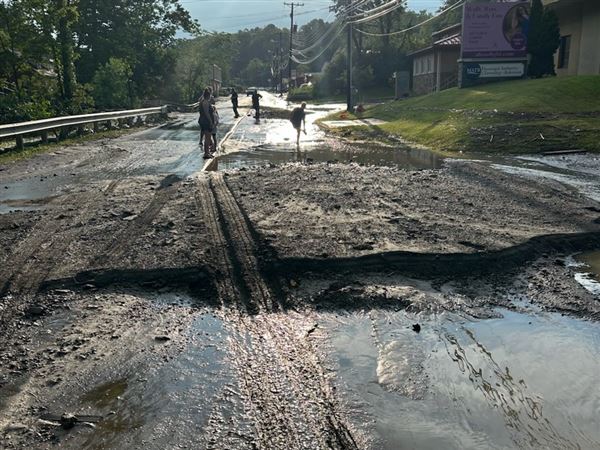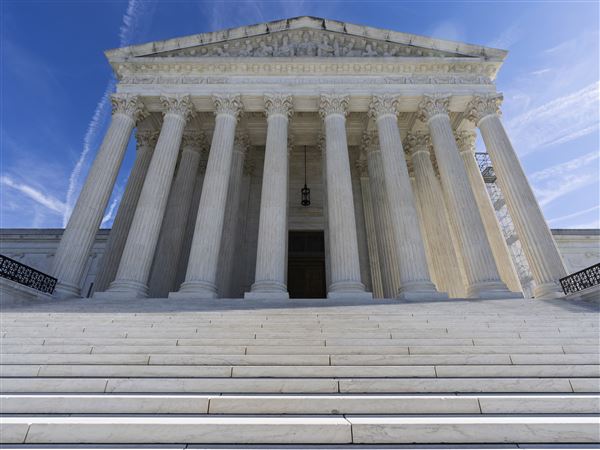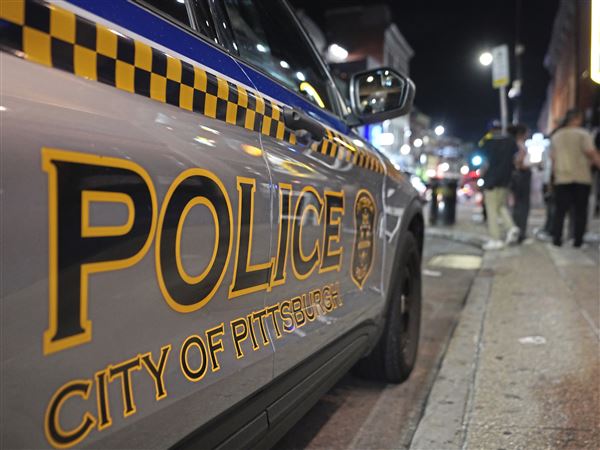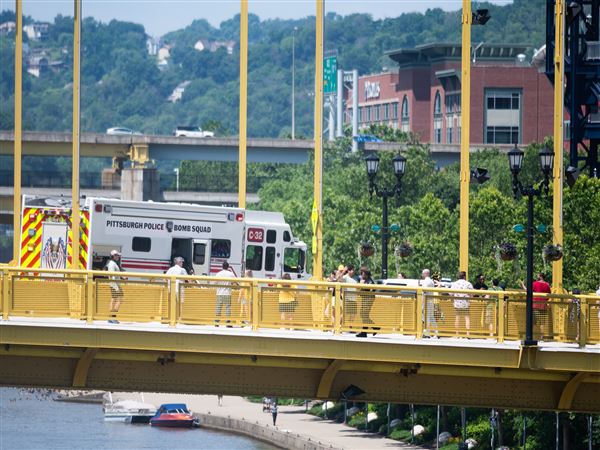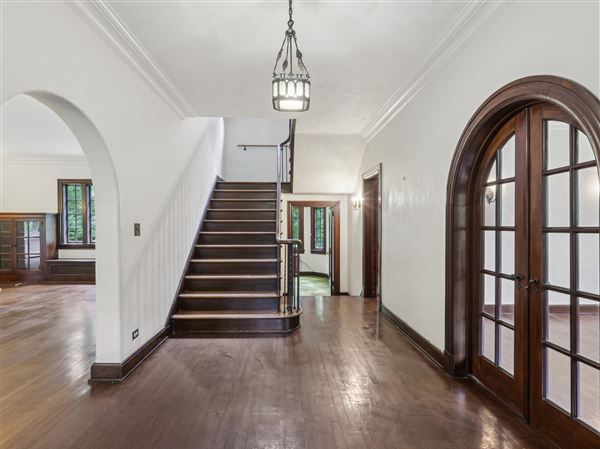
Stacy Innerst, Post-Gazette
 Find out everything you don't know about traffic signals
Find out everything you don't know about traffic signalsIt's no secret that Pennsylvania is a maddening patchwork of tiny municipalities that breed inefficiency. But here's something you probably did not know: In Pennsylvania, traffic signals are owned and operated by the municipality in which they are located. Most citizens would assume, if they have thought about it at all, that PennDOT owns the signals.
For most municipalities, signal maintenance is a low priority. It usually consists of assuring that the lights turn green, yellow and red. Efficiency as part of a complex and interdependent traffic system is not a consideration. The repair of detectors -- the devices that activate a green light when a vehicle approaches -- is one of the key components to improve efficiency. But for many towns, it is an unnecessary expense.
With fuel over $3 per gallon, these are expensive times for motorists. Every minute delayed at inefficient or malfunctioning traffic signals means money wasted.
For a driver in Pennsylvania, it seems like getting two or more green lights in a row is a major achievement. Everyone is becoming aware of our antiquated system of traffic signal management -- and the learning process is through the wallet.
In our land of fragmented governmental entities, development is often willy-nilly, approved by a municipality with little regard for the larger fabric. Traffic congestion is one of the first ill effects. Irate motorists complain to PennDOT, not to the towns that caused the problem. Developers must be held accountable for the traffic they generate and be responsible for the traffic signals that benefit their developments.
PENNDOT'S DISTRICT 11 COMPRISES Allegheny, Beaver and Lawrence counties. The district has about 1,700 traffic signals, 650 in the city of Pittsburgh alone. It's difficult to believe but there are dozens of signals installed as early as 1938 -- and are operating as built over 65 years later. These signals have never been reanalyzed or updated.
The Southwestern Pennsylvania Commission is recognizing that signal maintenance and modernization must be a priority. Only five or six municipalities were recognized as having a long-term transportation plan; most do not.
In the 1980s there were several PennDOT programs reconstructing dozens of signalized corridors. The traffic signals on routes 8, 30, 51, 88, and 65 were reconstructed and promptly turned over to the respective communities. Sometimes they were maintained, but usually not. In addition, the corridors have never been reanalyzed -- meaning the original timings have never changed for over 15 years.
If one traffic signal costs, on average, $100,000, millions of dollars have been spent to rebuild these signals. The most important item joining all of these municipalities, rich or poor, is the capability to maintain them.
Traffic signal coordination through dozens of adjoining municipalities is a task for a central administrator. PennDOT has tried to assume this role in District 11 and other parts of the state. But one cannot coordinate signals along a corridor if one or more of the municipalities involved do no signal maintenance.
Traffic flow is like water in a pipe. If one section fails and is not repaired, water will not flow regardless of the condition of the adjoining pipes.
This is the same situation on our major arterials. When vehicles are restricted through a corridor, the system fails -- resulting in bottlenecks and irate motorists. The lack of a central supervisor and enforcement of the systems' maintenance and timing changes leads to even more congestion and gridlock.
Are the municipalities really to blame? Their high priorities are fire and police, water, sewers and very basic municipal services. When these suffer, local taxpayers complain. Can the efficiency of signals be a major concern?
SO, HOW CAN WE IMPROVE the traffic signals and systems of Pennsylvania?
The state should create a special section in each Engineering District Traffic Unit to evaluate and implement new timings periodically on all corridors. If this is done, the state must also have a method of forcing towns to maintain and update their traffic signals.
Yet demanding that towns maintain signals without adequate funding will force the state into limited signal ownership. The state does not want to own the signals -- but is inevitable.
We must begin to investigate how other states are operating and how signal responsibility is assigned. There is no need to invent a new system when others have already developed policies.
Where will the dedicated funding come from? Whether funding is allocated from existing fuel taxes or new taxes is a decision of the Legislature. But when fuel costs increase daily, will the public notice, or accept, a tax increase? I believe they will only if there is a noticeable improvement in travel times and in the efficiency of all traffic signals.
Unnecessary signals, stop signs, unrealistic speed limits and other traffic restrictions must be evaluated and removed in accordance with law. The state should not be compelled to operate and maintain unnecessary traffic controls.
The present policies regarding traffic signal management in Pennsylvania cannot continue. Motorists must not be satisfied with getting just two green lights in a row. It's time to demand more efficient signals and systems.
First Published: August 5, 2007, 4:00 a.m.
